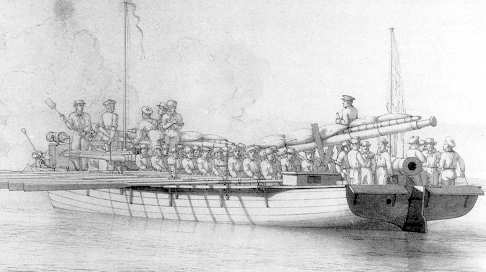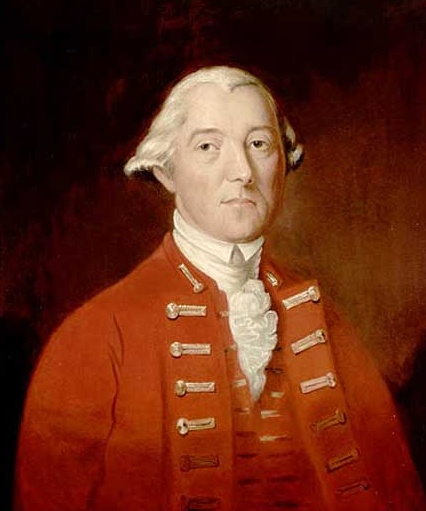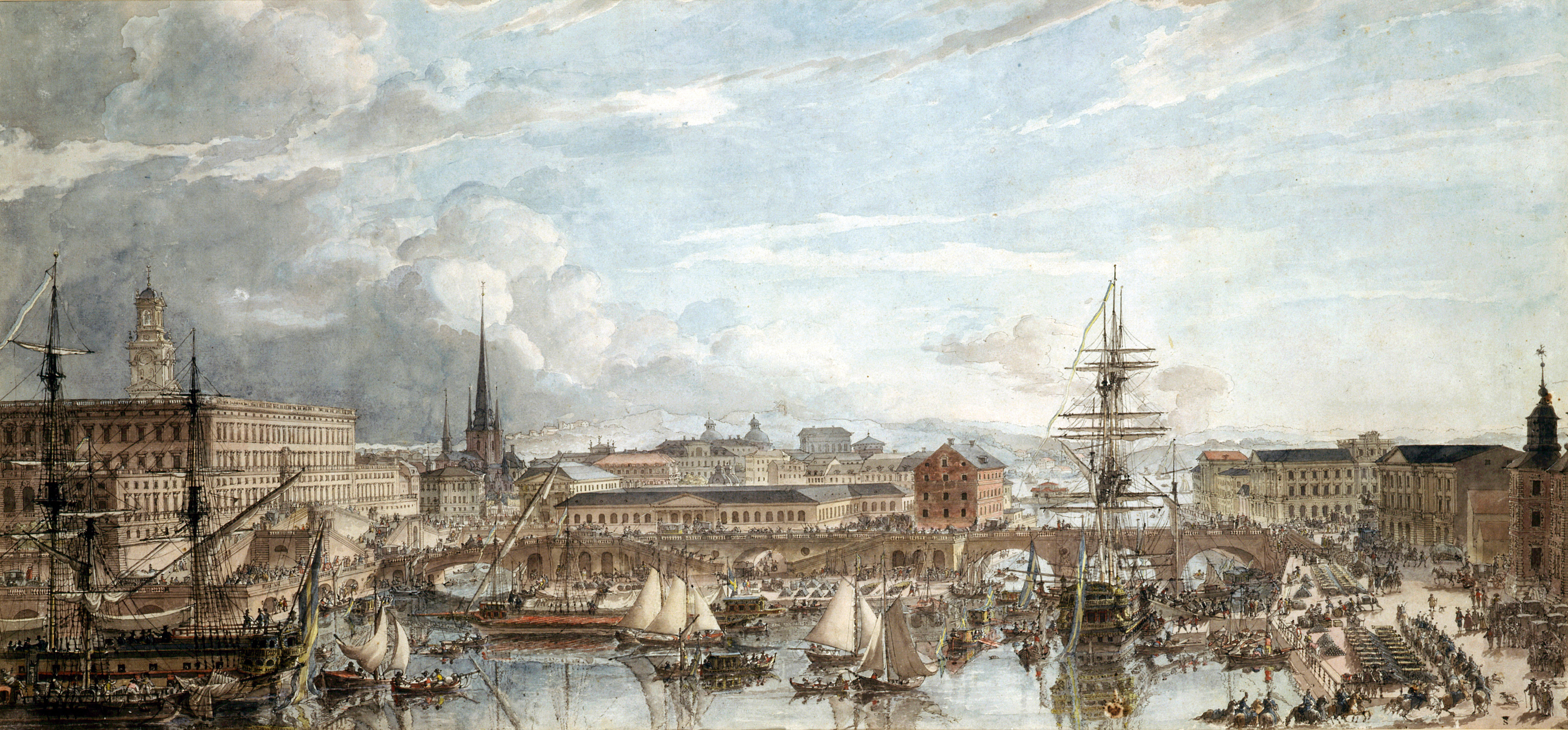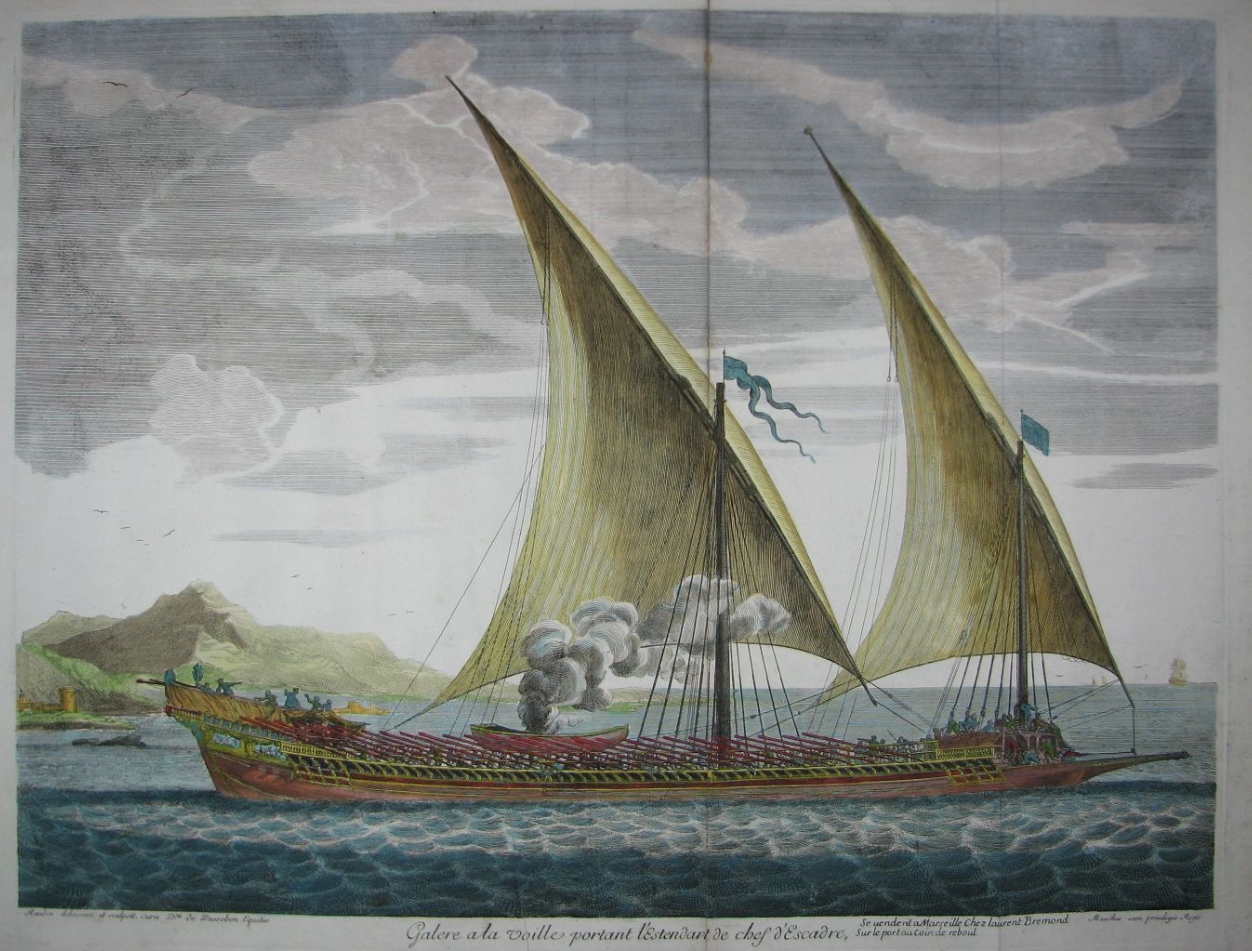|
Gunboat
A gunboat is a naval watercraft designed for the express purpose of carrying one or more guns to bombard coastal targets, as opposed to those military craft designed for naval warfare, or for ferrying troops or supplies. History Pre-steam era In the age of sail, a gunboat was usually a small undecked vessel carrying a single smoothbore cannon in the bow, or just two or three such cannons. A gunboat could carry one or two masts or be oar-powered only, but the single-masted version of about length was most typical. Some types of gunboats carried two cannon, or else mounted a number of swivel guns on the railings. The small gunboat had advantages: if it only carried a single cannon, the boat could manoeuvre in shallow or restricted areas – such as rivers or lakes – where larger ships could sail only with difficulty. The gun that such boats carried could be quite heavy; a 32-pounder for instance. As such boats were cheap and quick to build, naval forces favoured swarm ... [...More Info...] [...Related Items...] OR: [Wikipedia] [Google] [Baidu] [Amazon] |
Gunboat War
The Gunboat War (, , Swedish: ''Kanonbåtskriget''; 1807–1814) was a naval conflict between Denmark–Norway and Great Britain supported by Sweden during the Napoleonic Wars. The war's name is derived from the Danish tactic of employing small gunboats against the materially superior Royal Navy. In Scandinavia it is seen as the later stage of the English Wars, whose commencement is accounted as the First Battle of Copenhagen in 1801. Background The naval conflict between Britain and Denmark-Norway commenced with the First Battle of Copenhagen in 1801 when Horatio Nelson's squadron of Admiral Hyde Parker's fleet attacked the Danish capital. This came as a basis of Denmark-Norway's policy of armed neutrality during the latter stages of the French Revolutionary Wars, where Denmark used its naval forces to protect trade flowing within, into and out of the Danish-Norwegian waters. Hostilities between Denmark-Norway and the United Kingdom broke out again by the Second Battle ... [...More Info...] [...Related Items...] OR: [Wikipedia] [Google] [Baidu] [Amazon] |
Battle Of Valcour Island
The Battle of Valcour Island, also known as the Battle of Valcour Bay, was a naval engagement that took place on October 11, 1776, on Lake Champlain. The main action took place in Valcour Bay, a narrow strait between the Province of New York, New York mainland and Valcour Island. The battle is generally regarded as one of the first naval battles of the American Revolutionary War, and one of the first fought by the United States Navy. Most of the ships in the American fleet under the command of Benedict Arnold were captured or destroyed by a Kingdom of Great Britain, British force under the overall direction of General Guy Carleton, 1st Baron Dorchester, Guy Carleton. However, the American defense of Lake Champlain stalled British plans to reach the upper Hudson River valley. The Continental Army had retreated from Province of Quebec (1763-1791), Quebec to Fort Ticonderoga and Fort Crown Point in June 1776 after British forces were massively reinforced. They spent the summer of 17 ... [...More Info...] [...Related Items...] OR: [Wikipedia] [Google] [Baidu] [Amazon] |
Great Siege Of Gibraltar
The Great Siege of Gibraltar was an unsuccessful attempt by Enlightenment in Spain, Spain and Kingdom of France, France to capture Gibraltar from the Kingdom of Great Britain, British during the American Revolutionary War. It was the largest battle in the war by number of combatants. On 16 June 1779, Spain entered the war on the side of France and as co-belligerents of the American Revolution, revolutionary United States—the British base at Gibraltar was Spain's primary war aim. The vulnerable Gibraltar garrison under George Augustus Eliott, 1st Baron Heathfield, George Augustus Eliott was blockaded from June 1779 to February 1783, initially by the Spanish alone, led by Martín Álvarez de Sotomayor. The blockade proved to be a failure because two relief convoys entered unmolested—the first under Admiral (Royal Navy), Admiral George Brydges Rodney, 1st Baron Rodney, George Rodney in 1780 and the second under Admiral George Darby in 1781—despite the presence of the Spanish ... [...More Info...] [...Related Items...] OR: [Wikipedia] [Google] [Baidu] [Amazon] |
Fuerzas Sutiles
''Fuerzas sutiles'' ("subtle forces") was an 18th century term, used in the Spanish Empire and its successor states, referring to the strategic usage of small vessels in naval warfare.Martínez-Valverde, 1992 This included gunboats, xebecs and armed feluccas, originally used to defend ports before being re-purposed to offensive tactics, escorting convoys and operate in seas and rivers. The concept was popularized by captain Antonio Barceló, after which the Spanish Armada developed it extensively and with great efficacy, turning subtle forces into what has been described as "sea guerrillas". This kind of naval warfare would be known in France as ''flotilles a l’espagnole'' ("Spanish-style flotillas"). Vessels and tactics Traditional nomenclature in the Spanish Armada included four stages: ''buques de porte mayor'' ("major-sized ships" of over 34 guns, like ships of the line and frigates), ''buques de porte menor'' ("minor-sized ships" of 16 guns, like corvettes) and ''fuerza ... [...More Info...] [...Related Items...] OR: [Wikipedia] [Google] [Baidu] [Amazon] |
Russo-Swedish War (1788–1790)
The Russo-Swedish War of 1788–1790 was fought between Gustavian era, Sweden and Russian Empire, Russia from June 1788 to August 1790. The war was ended by the Treaty of Värälä on 14 August 1790 and took place concomitantly with both the Austro-Turkish War (1788–1791), Russo-Turkish War (1787–1792) and Theatre War. The war was, overall, mostly insignificant for the parties involved. King Gustav III, Gustav III of Sweden initiated the war for domestic political reasons, hoping to gain support from the opposition. Despite forming an alliance with the Ottoman Empire, Sweden failed to secure support from Kingdom of Great Britain, Great Britain, the Dutch Republic, and Kingdom of Prussia, Prussia. Sweden's initial plan to attack Saint Petersburg and instigate a coup to depose Empress Catherine the Great, Catherine II did not materialize. The war led to Denmark–Norway declaring war on Sweden, but peace was eventually signed on 9 July 1789 after diplomatic intervention by Gr ... [...More Info...] [...Related Items...] OR: [Wikipedia] [Google] [Baidu] [Amazon] |
Galley
A galley is a type of ship optimised for propulsion by oars. Galleys were historically used for naval warfare, warfare, Maritime transport, trade, and piracy mostly in the seas surrounding Europe. It developed in the Mediterranean world during Classical antiquity, antiquity and continued to exist in various forms until the early 19th century. It typically had a long, slender hull, shallow draft (hull), draft, and often a low freeboard (nautical), freeboard. Most types of galleys also had sails that could be used in favourable winds, but they relied primarily on oars to move independently of winds and currents or in battle. The term "galley" originated from a Greek term for a small type of galley and came in use in English from about 1300. It has occasionally been used for unrelated vessels with similar military functions as galley but which were not Mediterranean in origin, such as medieval Scandinavian longships, 16th-century Ghali (ship), Acehnese ghalis and 18th-century North ... [...More Info...] [...Related Items...] OR: [Wikipedia] [Google] [Baidu] [Amazon] |
Antonio Barceló
Antonio Barceló y Pont de la Terra (1 January 1717 – 30 January 1797) was a Spanish privateer and general admiral of the Spanish Navy. Of humble origins, Barceló rose to admiral on military merits alone, an unusual event at his time. He was active against Barbary piracy and slave trade in the western Mediterranean, adopting their tactics to counter them and serving himself as a pirate hunter for most of his career. He later developed extensively the usage of naval artillery and gunboats, leading to the creation of the '' fuerzas sutiles''. Biography He was the oldest of the five sons of Onofre Barceló, a small time privateer against the Muslim piracy that attacked the coasts of the western Mediterranean. Antonio started his career as a cabin boy in Onofre's xebec ''Santo Cristo de Santa Margarita'', eventually replacing Onofre as its captain, and added a job as a royal mail ship between Palma de Mallorca and Barcelona. With the Spanish Navy focused on the War of J ... [...More Info...] [...Related Items...] OR: [Wikipedia] [Google] [Baidu] [Amazon] |
Sailing Frigate
A frigate () is a type of warship. In different eras, the roles and capabilities of ships classified as frigates have varied. The name frigate in the 17th to early 18th centuries was given to any full-rigged ship built for speed and maneuverability, intended to be used in scouting, escort and patrol roles. The term was applied loosely to ships varying greatly in design. In the second quarter of the 18th century, what is now generally regarded as the 'true frigate' was developed in France. This type of vessel was characterised by possessing only one armed deck, with an unarmed deck below it used for berthing the crew. Late in the 19th century (British and French prototypes were constructed in 1858), a type of powerful ironclad warships was developed, and because they had a single gun deck, the term 'frigate' was used to describe them. Later developments in ironclad ships rendered the 'frigate' designation obsolete and the term fell out of favour. During the Second World War, ... [...More Info...] [...Related Items...] OR: [Wikipedia] [Google] [Baidu] [Amazon] |
Naval Warfare
Naval warfare is combat in and on the sea, the ocean, or any other battlespace involving a major body of water such as a large lake or wide river. The Military, armed forces branch designated for naval warfare is a navy. Naval operations can be broadly divided into riverine/littoral applications (brown-water navy), open-ocean applications (blue-water navy), between riverine/littoral and open-ocean applications (green-water navy), although these distinctions are more about strategic scope than tactical or operational division. The strategic offensive purpose of naval warfare is Power projection, projection of force by water, and its strategic defensive purpose is to challenge the similar projection of force by enemies. History Mankind has fought battles on the sea for more than 3,000 years. Even in the interior of large landmasses, transportation before the advent of extensive rail transport, railways was largely dependent upon rivers, lakes, canals, and other navigable waterways ... [...More Info...] [...Related Items...] OR: [Wikipedia] [Google] [Baidu] [Amazon] |
Spanish Navy
The Spanish Navy, officially the Armada, is the Navy, maritime branch of the Spanish Armed Forces and one of the oldest active naval forces in the world. The Spanish Navy was responsible for a number of major historic achievements in navigation, the most famous being the voyages of Christopher Columbus, discovery of North America and the Magellan's circumnavigation, first global circumnavigation. For several centuries, it played a crucial logistical role in the expansion and consolidation of the Spanish Empire, and defended a vast trade network across the Atlantic Ocean between the Spanish treasure fleet, Americas and Europe, and the Manila Galleon across the Pacific Ocean between the Spanish East Indies, Philippines and the Americas. The Spanish Navy was one of the most powerful maritime forces in the world from the late 15th century to mid-18th century. In the early 19th century, with the Spanish American wars of independence, loss of most of its empire, the Spanish navy trans ... [...More Info...] [...Related Items...] OR: [Wikipedia] [Google] [Baidu] [Amazon] |
Age Of Sail
The Age of Sail is a period in European history that lasted at the latest from the mid-16th (or mid-15th) to the mid-19th centuries, in which the dominance of sailing ships in global trade and warfare culminated, particularly marked by the introduction of naval artillery, and ultimately reached its highest extent at the advent of steam power. Enabled by the advances of the related age of navigation, it is identified as a distinctive element of the early modern period and the Age of Discovery. Periodization Like most periodic eras, defining the age is inexact and serves only as a general description. The term is used differently for warships and merchant vessels. By the 14th century naval artillery was employed in Europe, documented at the Battle of Arnemuiden (1338). The 15th century saw the Iberian naval ventures all the way along the African Atlantic coast and across the Atlantic Ocean, starting the Age of Discovery. For warships, the age of sail runs roughly from t ... [...More Info...] [...Related Items...] OR: [Wikipedia] [Google] [Baidu] [Amazon] |
Decked Kanonjolle1
Deck may refer to: A level or platform Buildings and structures *Deck (bridge), the roadway surface of a bridge *Deck (building), an outdoor floor attached to a building made of wood or wood-like material *Another name for a storey *The concrete or tile area surrounding a swimming pool * Deck arch bridge, a type of bridge * Observation deck, a platform situated upon a tall architectural structure or natural feature *Orthotropic deck * Roof deck, the framing and sheathing to which roofing material is applied Transportation *Bus deck, referring to the number of passenger levels on a bus * Cockpit, also called a "flight deck" Maritime *Deck (ship), a floor of a ship *Flight deck of an aircraft carrier Audiovisual equipment *Cassette deck, a type of tape machine for playing and recording compact cassettes * Head unit *Phonograph turntable * Tape deck, a sound recording and playback device People * Deck (surname) * Deck McGuire (born 1989), American baseball player Other uses * Deck ... [...More Info...] [...Related Items...] OR: [Wikipedia] [Google] [Baidu] [Amazon] |







